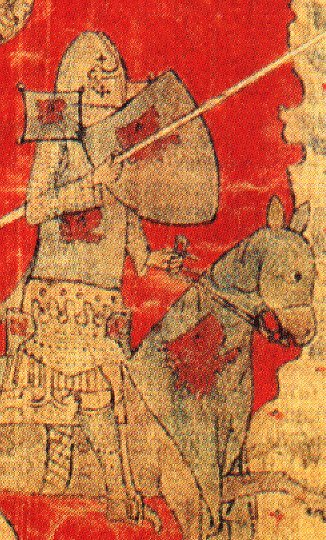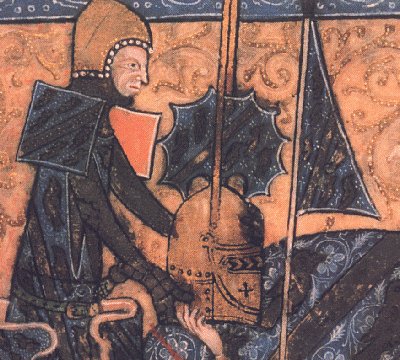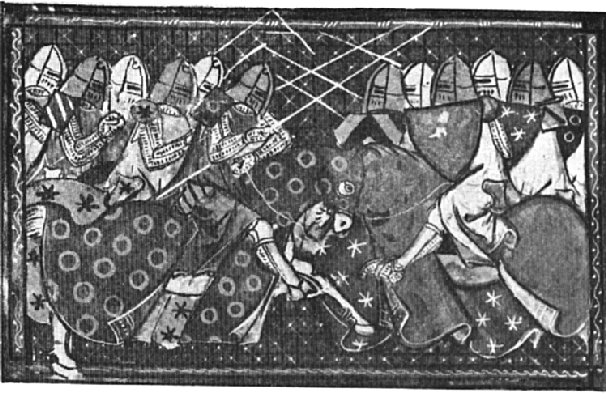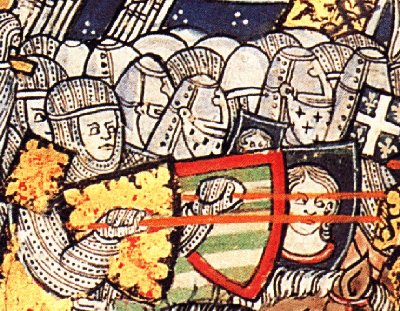Meanwhile I was doing my researche for my greathelm, I came across some pictures of oddly coloured helmets, and painted rectangular shoulder guards (I don't know the correct term for this piece of armour.) How common were these pieces?
Why did they use them? Only a decorative surface for heraldy, or it protected the neck? (On most pictures it overlaps the shoulder. It protected the relatively fragile spine from the attacks of two handed axes? Have a horseman face such attacks?)
Heat treatment might cause changing in colour, but as far as I know, the later bascinets were the first pieces to be hardened like this.
And if these patterns, colours etc. were painted, what kind of paint did they use? I've tried egg based paint, but I don't think so, that it could be applied on metallic surfaces. My only guess is oil paint. This kind of paint is originated from Afghanistan, and was really popular in the renaissance, altough the Benedictine monk, Theophilius Presbyter describes oil painting in his book, the ,,Schedula diversarum artium" (List of various arts, ca.1125.)
I haven't seen any surviving examples of painted helmets or oder pieces of armour, but if any of You did, please be so kind to send a pic. about it!
Thank you for your help,
John

Rectangular shoulder guard, with painting on it.
Circa 1330.

A nother painted shoulder piece,
Circa 1320.

A fairly known picture. The pattern on the flag, outfit and shoulderguard is the same. Notice the vivid colour on the inside. The whole pice might have been paintod to prevent rusting?
Circa 1330.

Helmets of all colour! Might this be due to the fantasy of the artist?
From between 1295 to 1330.

A nother example of flat-looking and painted pieces.
From between 1295-1330.

Note the matching of heraldic symbols.
Circa 1320.